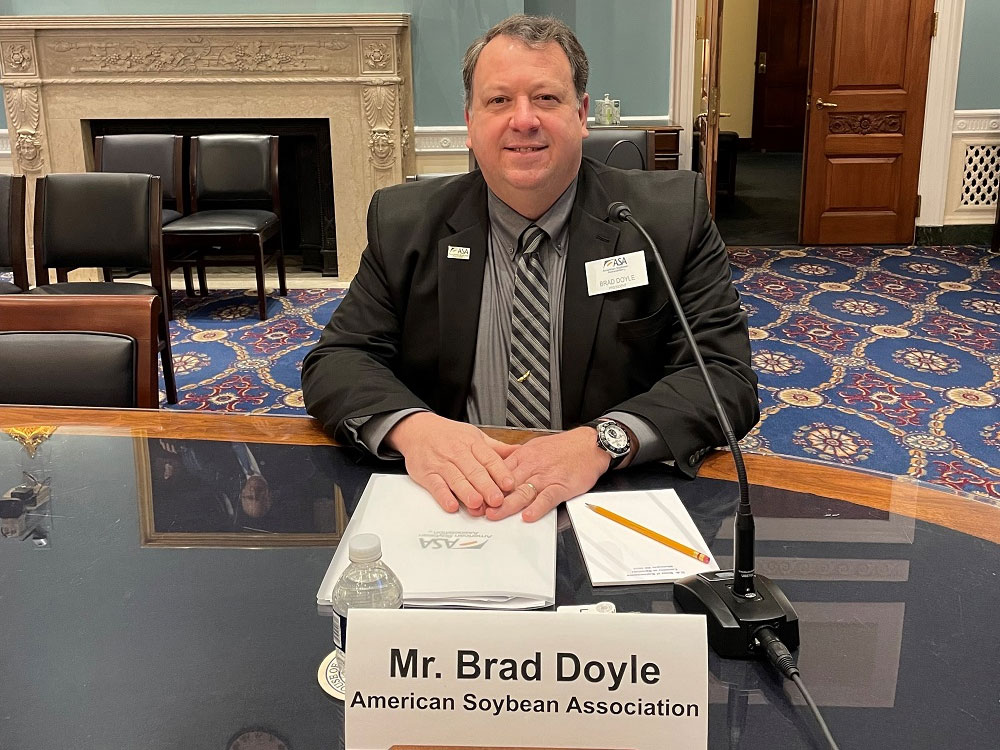Earlier this week, ASA President Brad Doyle (AR) testified during the U.S. House of Representatives Agriculture Committee’s hearing on Title I of the farm bill, specifically farm safety net components of the 2018 Farm Bill. During his testimony, Doyle reflected on farmer feedback received from ASA’s 12 farm bill listening sessions, farm bill survey, and written comments received, highlighting two primary concerns of U.S. soybean growers regarding Agricultural Risk Coverage (ARC) and Price Loss Coverage (PLC): soybeans have an insufficient reference price and a low level of base acres.

“If there were ever a time that the farm safety net was designed for, it was the trade war in 2018 and 2019. Factors well outside farmers’ control structurally shifted, collapsing much of the demand for U.S. soybeans,” Doyle said. “If soybeans, the second-largest crop by area in the U.S., did not receive help through Title I during this critical situation, it is hard to imagine a scenario where the Title I safety net could provide meaningful help with the current reference price. It is clear that improvements are needed to make the farm safety net effective for soybean farmers.”
Below is a select roundup of the many media stories covering Doyle’s testimony:
Brownfield AgNews covered the testimony, quoting Doyle and highlighting crop insurance as the top concern from recent ASA bill listening sessions and surveys.
Read more in Agri-Pulse regarding Doyle’s testimony and how soybean growers say the current farm bill safety net programs “won’t adequately protect their margins at a time of skyrocketing input costs.”
Feed&Grain also highlighted Doyle’s statement that if soybeans didn’t receive help under Title I during the U.S. China trade war, it’s hard to imagine a situation where the safety net could provide meaningful assistance.
The current five-year farm bill is set to expire in 2023. In preparation for farm bill reauthorization, ASA will continue to engage with policymakers to ensure a secure safety net for U.S. soy growers in the next bill.

Follow us on social media: